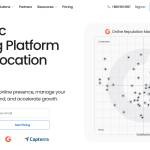In today’s rapidly evolving digital landscape, businesses face the constant challenge of adapting to new technologies and customer demands. Digital transformation has emerged as a vital strategy to stay competitive and relevant in the digital age.
At its core, digital transformation involves leveraging technology to revolutionize business processes, enhance customer experiences, and drive innovation. However, embarking on a digital transformation journey without a clear roadmap can be a daunting and risky endeavor.
This blog aims to shed light on the significance of a digital transformation roadmap, its components, and how it can guide businesses toward successful digital transformation.
In this digital era, there is a growing demand for Agile and Scrum certifications in all aspects of business.
Understanding Digital Transformation
Digital transformation is not merely about adopting the latest tools and software; it represents a holistic change in an organization’s culture, processes, and strategies. At the heart of digital transformation lies the integration of technology to optimize operations, enable data-driven decision-making, and create new business models. The goal is to achieve enhanced efficiency, greater customer satisfaction, and sustainable growth.
A digital transformation roadmap is a strategic plan that outlines the steps, goals, and timeline of the transformation process. It acts as a guiding compass, directing organizations on their journey from their current state to the envisioned future state.
Components of a Digital Transformation Roadmap
Vision and Objectives
The first step in creating a digital transformation roadmap is to establish a clear vision and objectives. This involves defining the purpose of the transformation, understanding the organization’s strengths and weaknesses, and aligning the transformation with the overall business strategy. Without a compelling vision, the transformation may lose direction and fail to gain buy-in from stakeholders.
Assessment of the Current State
Before embarking on a transformation journey, organizations must conduct a thorough assessment of their current digital capabilities and readiness. This assessment involves evaluating existing technology infrastructure, identifying pain points in processes, and understanding the skill sets of the workforce. An accurate picture of the present state serves as a foundation for identifying areas that require improvement.
Stakeholder Engagement
Involving all stakeholders is critical for the success of a digital transformation initiative. Stakeholders can include employees, customers, partners, and investors. Engaging stakeholders early on and involving them throughout the process fosters a sense of ownership and ensures that diverse perspectives are considered during decision-making.
Technology Strategy
The technology strategy forms the core of a digital transformation roadmap. It involves selecting the right technologies that align with the organization’s goals and budget. This may include cloud computing, big data analytics, artificial intelligence, Internet of Things (IoT), and more. The technology strategy should be scalable and adaptable to future changes.
Data Management
Data is the lifeblood of digital transformation. Organizations must devise a robust data management strategy to capture, store, analyze, and secure data effectively. This includes ensuring data quality, governance, and compliance with relevant regulations like GDPR.
Skill Development
Digital transformation requires a workforce equipped with the necessary skills to leverage new technologies effectively. Investing in employee training and upskilling is crucial to ensure a smooth transition and maximize the benefits of digital transformation.
Pilot Projects
Before implementing changes on a large scale, conducting pilot projects allows organizations to test the waters, learn from mistakes, and refine their approach. Pilot projects also provide an opportunity to showcase early successes, gaining support and confidence from stakeholders.
Implementation Plan
The transformation roadmap should outline a detailed implementation plan, specifying the sequence of activities, milestones, and timelines. Breaking down the journey into manageable phases makes the process more achievable and reduces the risk of disruption to ongoing operations.
Monitoring and Evaluation
Continuous monitoring and evaluation of the transformation progress are vital to identify deviations from the plan and take corrective actions. Key performance indicators (KPIs) should be defined to measure success and adjust the roadmap accordingly.
Change Management
Digital transformation invariably involves significant changes to processes, roles, and organizational culture. Effective change management strategies, including clear communication, training, and support, are essential to navigate resistance and ensure smooth adoption of new practices.
Conclusion
In an era of constant digital disruption, organizations must proactively embrace digital transformation to remain competitive and meet evolving customer expectations. A digital transformation roadmap provides a structured approach to navigate the complex journey, ensuring alignment with business objectives and maximizing the return on investment. By carefully considering the components discussed in this blog, organizations can create a roadmap that guides them towards a successful digital transformation, unlocking new opportunities and driving sustainable growth in the digital age.
Agilemania provides fast digitalization solutions and helps you navigate the journey to a highly functional agile culture.
Lynn Martelli is an editor at Readability. She received her MFA in Creative Writing from Antioch University and has worked as an editor for over 10 years. Lynn has edited a wide variety of books, including fiction, non-fiction, memoirs, and more. In her free time, Lynn enjoys reading, writing, and spending time with her family and friends.















